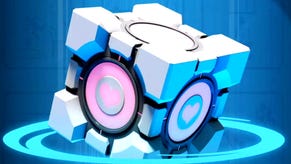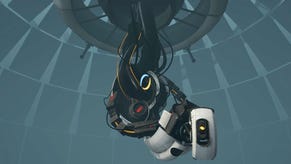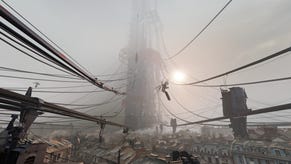Face-Off: Portal 2
Through the looking glass.
Another factor to weigh into the discussion is that while Portal 2's co-op play works rather well cross-platform, in a great many other applications, the ability for computer owners to use faster and more intuitive control systems such as the classic keyboard and mouse combo may well upset game balance.
Those PS3 owners who do redeem their Portal 2 code for PC or Mac will find that even with relatively meagre system specs, the Source engine really performs beautifully. Valve has always concentrated on making its games really playable on a vast range of PC hardware, and even max settings shouldn't stress any one running a PC with a decent dual core CPU and an entry-level enthusiast graphics card.
Here's how Portal 2 shapes up on PC compared to the PS3 version of the game. It's interesting in that you can compare MLAA up against the 16x Q CSAA setting we used when capturing the PC version. 16x Q CSAA should be eight multi-samples with eight extra coverage samples. Basically, it should result in eight extra pixel shadings on the edge, but the extra coverage samples supposedly result in better colour results. It's not always true though, so it can actually be worse in practice than regular 8x Quality AA. Regardless, this should be a very good test for comparison against MLAA - see what you think.
There's a much greater degree of difference between the PC and Xbox 360 versions, which we also have covered off in a separate comparison video.
While there have been some complaints about the PC version being a console port, it's worth pointing out that the basic concept of the game itself is universal - this isn't a game that requires a stupendous, state-of-the-art computer.
There are some refinements over the console builds over and above the higher performance level and the ability to switch up to resolutions well in excess of the locked 720p found on PS3 and 360. For example, some textures benefit from higher quality artwork, lighting is quite often more refined and there are some enhanced shader effects here and there. The only thing missing from the PC game that is found in the console releases is the split-screen co-op mode - multiplayer is online-only here.
Quite why a vocal minority of the PC audience has turned on the game is a bit mystifying. It is clearly better than most of the cross-platform releases out there, and it's not as if the audience had to wait three to six months for it to appear either. Mention of not turning off your console in the PC game has raised the ire of some, but this is most likely a simple string table bug that really should have been picked up by QA, but wasn't.
The various arguments about the "day one DLC" may seem equally ludicrous bearing in mind that we're talking about co-op costumes that have absolutely zero effect on the gameplay. However, perhaps there is a lesson to be learned here - the kind of marketing campaigns used in the console market perhaps hold little appeal to the PC audience.
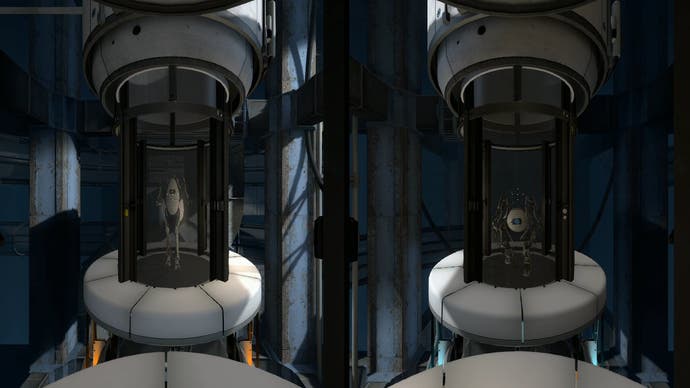
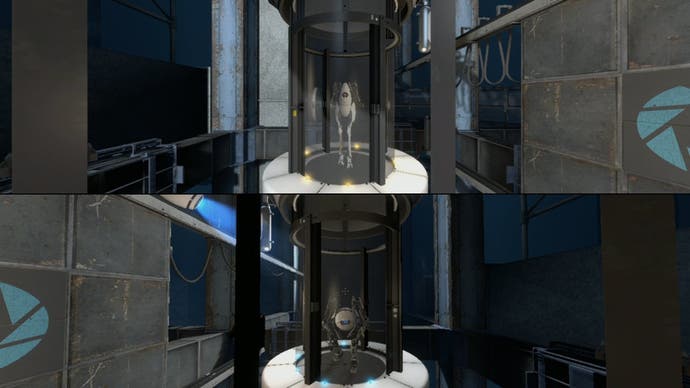
In conclusion, Oli scored Portal 2 as a 10/10 PC game in the Eurogamer review, and I doubt he'd mark down the Xbox 360 version since it is unarguably the same core game. That said, it's tangibly the weakest of the three different releases we've looked at here.
With the other two SKUs, what we're seeing are levels of refinement added to what is already a simply stunning game. The PC version has some superior lighting and effects work, and improved textures, but being able to run the game at higher resolutions and frame-rates does add significantly to the experience - with the faster update, the physics in particular stand out as being more realistic, pleasing and believable, and this is a core element of the Portal 2 experience. PC also features 3D Vision support: it's a bit buggy at the moment (NVIDIA tells us an upcoming driver revision will fix these issues), but 3D actually works for this game with depth perception being valuable for precision placement of portals.
In a straight console vs. console shootout, the refinements and the value added to the PlayStation 3 game make it the version to buy if you're in the position to be able to choose between them. In terms of the complete package you get for your cash, you simply can't argue with a free copy of the PC and Mac version of the game [Updated: Portal 2 is a Steamplay title and redeeming the code unlocks both computer versions] and the idea of being able to play co-op with any one on PSN or Steam regardless of format is clearly a big step forward.
Visual refinements such as MLAA also work well here, and it's a real shame that Valve didn't improve its existing edge-smoothing solution for the Xbox 360 version of the game.



